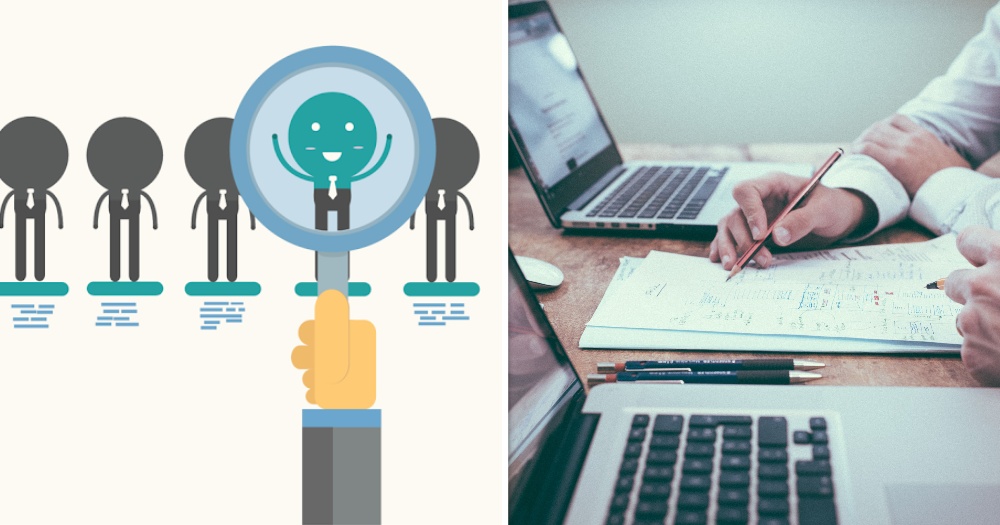Biases, we all have them.
Don’t think so? I knew you were that kind of person. Wait a minute, did I just make a biased statement?
Biases in the workplace, in particular, especially might lead to all sorts of problems.
To combat this potential unfairness, it is important to understand some broad categories of biases that we may have.
We’ll look at six of them and the problems that result from these biases.
1. Affinity bias
Imagine you’re the boss, nice right, and you realise one of your employees comes from the same sports club as you.
There’s a lot of things to talk about, many inside jokes. You both fondly remember a certain coach, although his version of the coach could be significantly older.
He seems like a nice guy and even reminds you of you in some ways.
When a position opens up for a senior role, you instinctively know who is the best man for the job. He’s your club mate after all, and everyone knows that those who are from that sports club are the best people.
That’s what we call affinity bias.
It’s when you prefer people with more similar traits to you or your current team. Be it similar interests, experiences, or backgrounds.
This might lead to the person who’s doing an ok job but who fits a certain mould, being promoted over a person who’s doing a great job, but might not share the same background.
The best thing to confront this bias is to acknowledge it. Acknowledge the similarities you find appealing, but make sure your review is not slanted by it.
2. Confirmation and 3. Conformity bias
Biases can even come into play before the actual hiring takes place.
Let’s say a candidate comes in with a slightly dishevelled appearance. Perhaps the candidate is a bit late for the interview.
“Ah, this one sure trouble and lazy one” goes the hiring manager. And the rest of the interview turns into a fact-finding mission to reinforce that initial perception.
A slight misstatement or an uncommon gesture becomes the biggest sin of all time. Any great answers or acts of competence are overlooked.
That is confirmation bias, where you actively look for evidence to confirm your preconceived notions.
Other members of the hiring panel think to themselves, the hiring manager does make a good point about the dressing.
“Yeah, this one probably troublesome and also lazy” they ultimately conclude.
One of the panel members wasn’t so harsh and thought the candidate was just having a bad day. But since no one else brought it up, the person just nodded with the rest.
That is conformity bias, where you may have different views but feel pressurised to agree with the majority.
A good way to avoid these biases during an interview is to create a structured process.
This means using a set of objective criteria and evaluation forms to assess the candidate.
Conformity bias can hopefully be overcome by appointing a diverse panel to minimise bias during the interview.
The members of the panel must also be empowered to voice their opinions, and not be auto-swayed by others.
4. Halo and 5. horns effect
Halo and horns effects are basically two sides of the same coin. An employee thought of as having some positive traits will have his future actions viewed in a more favourable light
Conversely, an employee thought of as having a negative trait would have future actions looked at with an unfavourable view.
Say Employee A is more extroverted, the bosses think the person is “better” and “all-rounded” and provide many more opportunities.
On the other hand, if Employee B is a good and quiet worker but stumbled during a presentation, Employee B may never have another chance to redeem himself or be given an important project, because the bosses think the person can’t make it.
Now, whatever Employee A does is spectacular, and Employee B can do nothing right.
Sad life.
To mitigate this, you can consciously avoid focusing on the things that you personally dislike, but which have no impact on the person’s ability to do the job. Tough ask, but this must be done.
6. Attribution bias
Have you ever done something bad, maybe you forgot to turn off the office lights, and it was met with a sigh and an exasperated reaction?
“As usual from (insert your name)”.
However, when you hand in your work early and have done great, the credit goes to your new exceptional Logitech MX Keys keyboard that you were doing your work on.
That’s attribution bias.
Basically, jumping to conclusions regarding negative traits, while attributing positive traits to external factors.
So…
Now that we are more aware of the whole gamut of inherent biases…
How to fix it
Identifying biases is not just for self-awareness, but also to ensure the workplace remains a fair place, with equal treatment for all. Biases and stereotypes can have a negative effect on our attitudes, both seen and unseen, which could lead to workplace discrimination or treating others unfairly. Plus, for sure - you wouldn’t want to be at the receiving end of it yourself.
There’s no quick elixir to get rid of all biases, and it involves constant effort to keep them in check.
You can take the Harvard Project Implicit test to gain a better understanding of your own biases. It is a free online test that measures attitudes and beliefs that we may be unwilling or unable to report. This also helps us understand attitudes, stereotypes and biases that influence our perception, judgement and actions.
You should also assess your network and beliefs and actions. Who do you listen to? Who do you seek advice from? What are the assumptions you make about others?
Additionally, employers and HR practitioners can do their part to eliminate institutional bias. One way is to adopt a transparent appraisal system with measurable standards to assess job performance. They can also implement a grievance handling procedure and provide a safe channel for employees to raise concerns, and facilitate resolution when these employees are subjected to biased behaviours.
Where there are complaints of workplace discrimination, the Tripartite Alliance for Fair and Progressive Employment Practices (TAFEP) will investigate based on principles set out in the Tripartite Guidelines on Fair Employment Practices (TGFEP) and advise the parties accordingly.
PM Lee had also announced at the National Day Rally last year that the Government will enshrine the TGFEP into law.
It is important that we recognise our biases and proactively curb them before they lead to discriminatory actions towards co-workers and employees. So - know it to end it.
Start with the man or woman in the mirror. Start today.
Where workplace discrimination has occurred, TAFEP works closely with the Ministry of Manpower to take appropriate action against the employer.
If you face workplace-related discrimination or unreasonable employment practices, you can submit an online report here.
Photo by Scott Graham on Unsplash and TAFEP
This article made the writer think about his own biases.
If you like what you read, follow us on Facebook, Instagram, Twitter and Telegram to get the latest updates.


